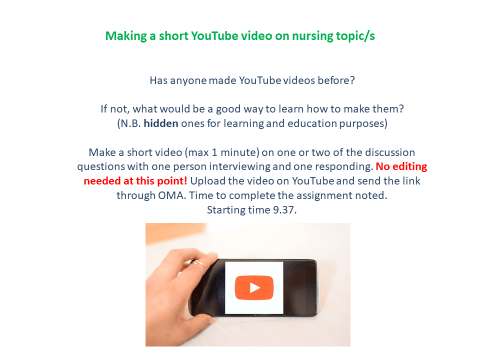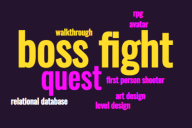A University English and Communication teacher walks into a computer classroom to start a course on Professional English for Nurses. The program for the day’s lesson is obviously ready, but the teacher – frustrated with time issues common to most teachers in keeping updated with the ongoing digital revolution – is toying with an idea of engaging in some ad hoc digital co-learning with the students, in spite of the program.
One key digital skill well worth acquiring that the teacher is lacking has to do with making YouTube videos. She assumes the students are very much in a similar situation, despite being representatives of the generation Z. The teacher is not quite sure what she is going to do but she knows exactly how she wants to do it: since her working hours are all already spoken for, it must take place through minimum input in preparation time with maximum expected outcome! As she mulls this over in her head silently, she comes to think of trying out MVP, Minimum Viable Product, a concept well-known to her from teaching English to Industrial Management students.
— She decides to go for it —
In business contexts, MVP is used to describe that version of a new product a team uses to collect the maximum amount of validated learning about customers with the least effort in order to save resources such as time and money (Ries, 2011). Standing in front of the class about to start the lesson, the teacher realizes MVP could easily be adopted to university and teaching contexts for co-creating something valuable from the learning perspective by using a minimum amount of preparation time to do it. She decides to go for it, right there and then, for better or for worse.
All preparation done in class
First, in accordance with the ready-made program, the teacher sets the students working on a conversation task with discussion questions on the nursing profession. Then, deviating from the program, the teacher starts her experiment by using MVP to co-learn making YouTube videos with the students. The students firmly engaged in lively conversation, she prepares a simple slide with short instructions on making a YouTube video, as shown below. = NO TIME SPENT ON PREPARATION OUTSIDE CLASS

Co-learning with students by using Google as teacher
The slide is animated and only shows the first two questions with the rest of the instructions appearing with a click. As anticipated, only one person has some earlier experience with making YouTube videos and when asked what would be a good way of learning how to make YouTube videos, the students answer “Google how to…” just as the teacher expected.
The teacher then further elaborates on the instructions by giving a short pep talk on the benefits of learning digital skills together whilst engaging in a class activity. In particular, the teacher stresses the fact that no editing is needed to make a Minimum Viable Product, i.e. the short video. Thus, once everything is clear, the teacher and the students tackle the exercise together. = NO TIME SPENT ON FIRST LEARNING THE SKILL OUTSIDE CLASS AND THEN TEACHING IT TO STUDENTS
The outcome
As the outcome, everyone in the classroom, teacher included, learnt how to create a YouTube account, make a short video and upload it first to YouTube and then to the school learning management system OMA. All this while doing an English exercise on nursing. The details of mastering YouTube are shown in the Table below. The time used for the exercise included Googling ‘how to’, choosing the question/s for the video interview from the earlier conversation task and planning how to carry out the interview, recording the video, uploading it to YouTube and finally to LMS (Learning Management System). As seen, the first video (not by the person with prior knowledge of YouTube!) was uploaded only 27 minutes after the start time while the last one took about an hour to end up in LMS.
Mastering YouTube

In addition to the time aspect, the students were asked about the level of difficulty of the experiment by using a simple questionnaire the teacher made in connection with preparing the slide. On a scale from 1 to 10, with 1 representing extremely difficult and 10 extremely easy, the responses varied between 7 and 9, the average being 8. The difficulties had mainly to do with the challenge of getting the video to upload from mobile phones to the LMS.
— the first video was uploaded only 27 min after the start time —
Encouraged by the outcome, the teacher repeated the same experiment with three other groups, 87 students in total. The results were very similar.
6 Key takeaways for teachers with “no time”
- Since lack of time is the root problem of learning new skills, harnessing the time we have in class to productive use is a brilliant idea!
- Letting go of the idea that everything has to be prepared exhaustively and well in advance is a must!
- If you have been contemplating creating YouTube teaching videos to accommodate future virtual courses (which are just around the corner!), MVP really is one answer to taking digital baby steps (closely related to Lean and Agile, two other business concepts that could guide our thinking)!
- Co-learning saves everybody’s time!
- Teachers may use the skill for instance for making teaching videos as mentioned in point 3 and students to submit school assignments in video format!
- Business and university worlds are not that far apart and we should look to each other for answers!
The absolutely best part about the entire experiment was the fact that everything took place in class. The videos turned out to be mainly very professional and even creative, showing very excited looking and happy faces, most likely due to the fact that editing was not allowed for simplicity. Take a look at the videos: first one by Juuli Kinnunen and Jenna Juusola, second one by Emma Lepistö and Jenni Lämsä.
MVP is a killer concept 🙂
Sources:
Ries, E. (2011). The Lean Startup. New York: Random House US.
Picture in Sonja´s slide: Pixabay, Beatriz Jacob (CC0)
Read part 2 and part 3 of the Digital baby steps series.









Ei kommentteja